#growing vegetables
Text
I know we’re still in 2023, but here’s my New Year’s resolution anyways
Even though I live in the heart of the city, I’ve decided that I’m going to grow my own fruits and vegetables using a couple of smart gardens (like the one shown below)
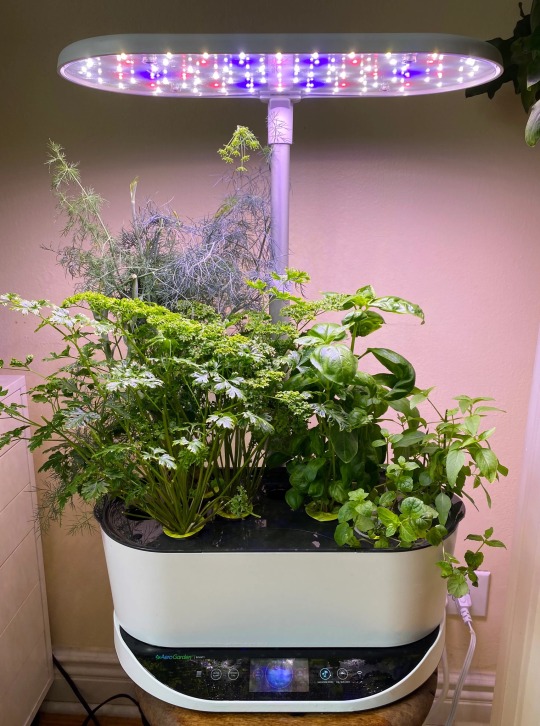
That and I recently discovered blue Java bananas, which are blue bananas that taste like vanilla ice cream and yes those are actually real. Another thing I found interesting is the fact that while the bananas themselves are pretty hard to come by (at least here in the UK), it’s relatively easy to buy the seeds for the trees they grow from, so one of my plans for the new year is to plant and grow one of these trees.
In general I’m going to invest more time in taking care of plants and hopefully I’ll be able to provide a loving home for a cat too
Definitely getting in touch with my solarpunk side, as much as I’m able 👍
#arwen speaks#new years resolution#solarpunk#plants#growing vegetables#growing fruits#growing trees#smart garden#optimism
52 notes
·
View notes
Text
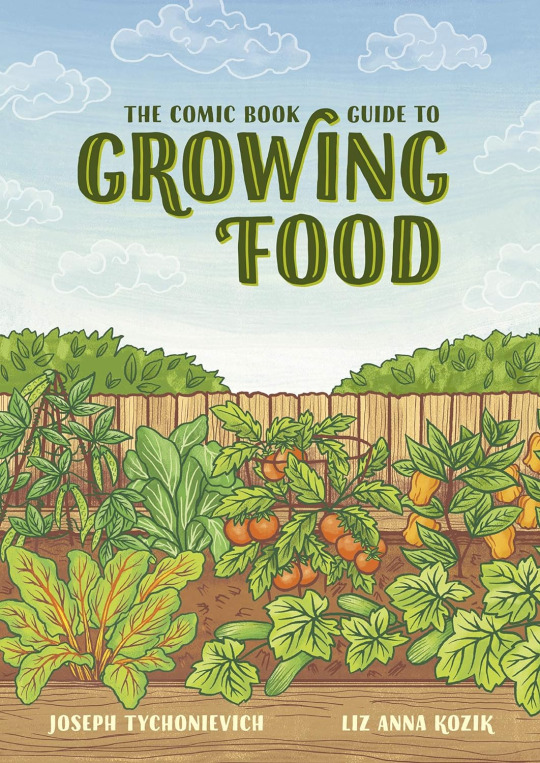
#the comic book guide to growing food#joseph tychonievich#liz anna kozik#gardening#growing vegetables#ten speed graphic#graphic novel#graphic novels#poll
11 notes
·
View notes
Text
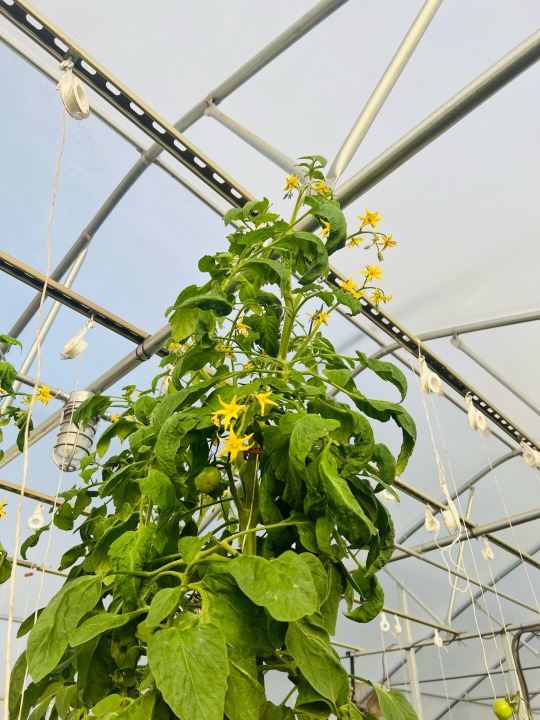
11/7/23 ~ Greenhouse tomato gettin talllll
#indoor garden#container gardening#sustainable gardening#vegetable gardening#starting seeds#veganuary#grow organic#grow your own food#organic gardening#tomato garden#greenhouse nursery#greenhouse#growing vegetables
7 notes
·
View notes
Video
youtube
Expert Tips for Thinning Zucchini Seedlings the Right Way 🌱
Dive into the world of zucchini gardening with our expert tips on thinning seedlings! Discover the secrets to promoting healthy growth and maximizing your harvest. Learn the best practices for thinning out your zucchini plants without causing harm. Watch now and cultivate a flourishing garden! 🌻
Don't miss out on expert tips for thinning zucchini seedlings! Watch now to ensure your zucchini plants thrive and yield a bountiful harvest. Let's grow together! 🌿
#youtube#youtubepromotion#youtube video#youtube views#video#videos#gardeningvideo#vegetable gardening#vegetable garden#vegetables#vegie#vegies#growing vegetables#gardening#gardenblr#gardencore#gardening tips#gardening techniques#howto#how to video#indoor plants#gardeners on tumblr#tumblr
4 notes
·
View notes
Text

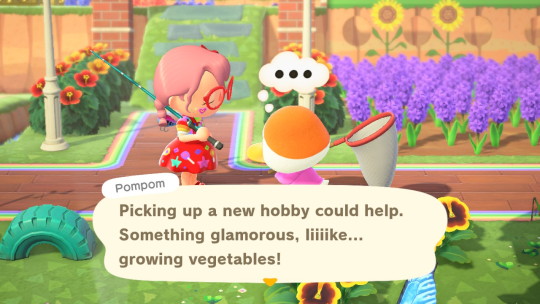

Is growing vegetable glamorous?
#I'm so confused#glamorous#vegetables#growing vegetables#queen bee#lmao#pompom#pompom the duck#acnh pompom#acnh#acnh life#acnh island#acnh islanders#acnh villagers#acnh residents#acnh hype#acnh community#acnh blog#animal crossing#new horizons#animal crossing new horizons#animal crossing: new horizons#nintendo#nintendo switch#nintendo switch games#nintendo acnh#acnh nintendo#switch#switch games#switch acnh
4 notes
·
View notes
Text
Growing and Gardening: Growing Potatoes

I had attempted to grow potatoes before, and even harvested a few; but no attempt was as successful as this year’s! And I’m not even done digging yet!
It all started on a cold January day. A local farmer was going around neighbourhoods in my town, selling his produce. A bit pricey perhaps; but excellent quality, and because he only sold in large amounts, I ended up with some twenty-five kilos of potatoes (in addition to fifteen of carrots, ten of white and five of red onions!)
It kept rather well in the garage, and the vegetables were delicious. But even in the dead of Winter, there are so many potatoes two people can eat!
Thus they started shrivelling and growing sprouts! Perfect, I thought; then, I could plant them!

And so I did! On the 29th of March, I prepared the place I would plant them in, a large iron garden bin, where I had grown and harvested the last of the Mesclun. One thing to always remember when growing vegetables is to rotate your crops; you cannot grow the same type of vegetables in the same spot two years in a row. The previous crop will have taken most the the nutrients they need, leaving very little left in the soil, and your next harvest, if any, might not be as bountiful... Luckily, different crops need different nutrients from the soil they grow in; hence the rotation. Tubers (like potatoes), for instance, will appreciate a soil formerly hosting brassicaceae (like cabbage, kale, etc...) or leafy greens (like lettuce or spinach).
I tilled the soil thoroughly, and mixed in good soil and compost to amend it. I left it for a few days.
Then, on the 4th of April, I planted my sprouted potatoes. I had eight (8) of them, and arranged four (4) on two levels, so the bottom ones would not be right underneath the top ones. There was about 15cm/5.5″ of soil mixture between both levels.

I covered them with about as much soil mixture (15cm/5.5″). I watered thoroughly. It is also important to have a good drainage, if you grow potatoes in a container, or they will rot. A few years back, I had hammered in four holes in this iron bin, and it wasn’t easy; but very much worth the effort!
Then, I watered regularly only when the April showers were scarce! After a couple of weeks, potato stalks and leaves were starting growing in the bin.

And after a month and a half (on the 16th of May), they were tall and luscious and very leafy!!! From then on, it is very easy to take care of them. Water when the soil gets dry to the touch, trim the leaves a little when they become yellow.
You can also sow herbs at the feet of your potatoes. They may improve their taste and protect them against aphids. Cilantro and thyme are good companions. I only managed a very small bunch of Cilantro. Because they are in a bin, and the Cilantro stalks are significantly thinner and smaller than the potatoes’; they do not get as much light as they would if you planted and sowed in a Veg Patch.
That said, harvesting potatoes in a bin is heaps more convenient! You know where they all are; you just need to dig them out!
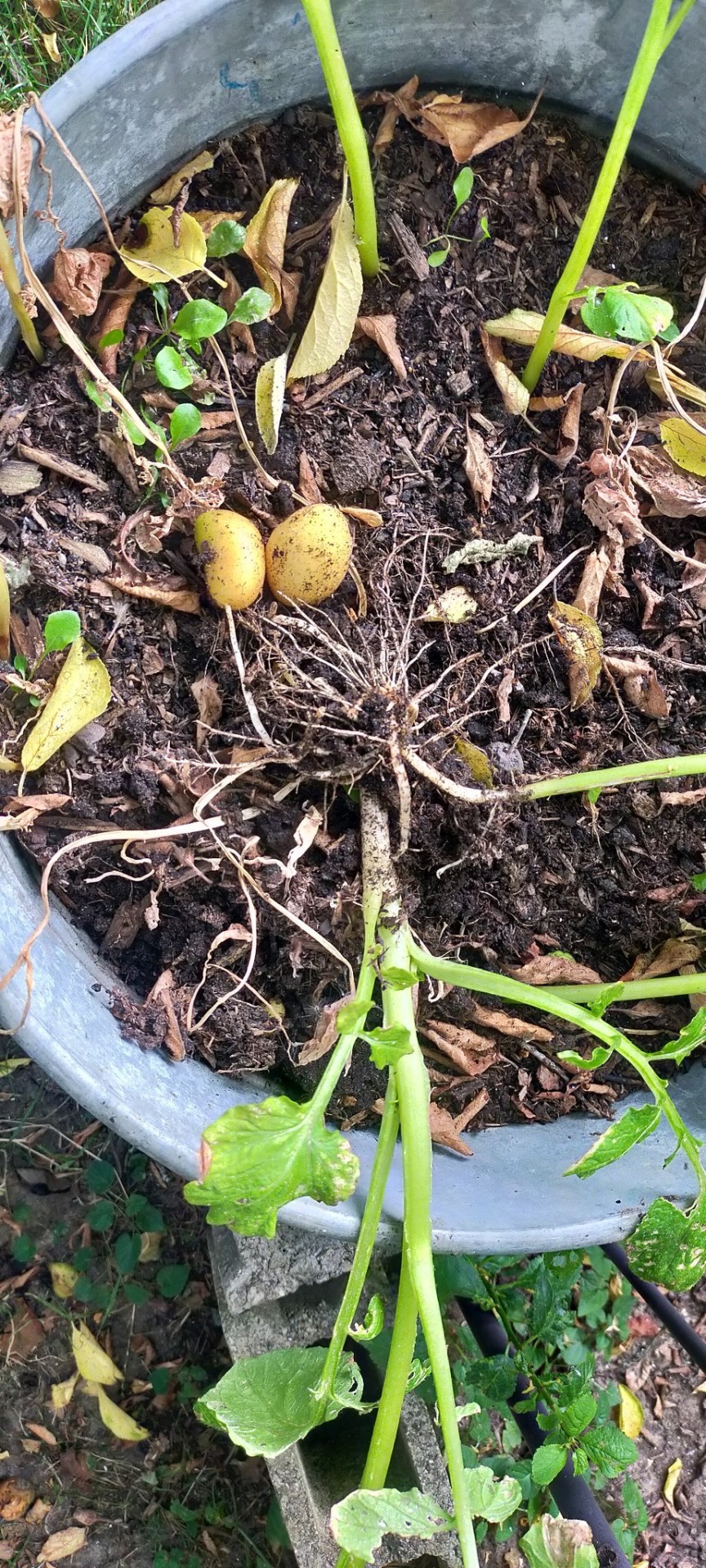
I dug about 840 grams/1.85 pound New Potatoes (harvested about three and a half month after planting); and left the greenest, leafiest stalks in the bin to harvest later, and perhaps have bigger spuds! I might also try to sow more, as there is enough light for it now!
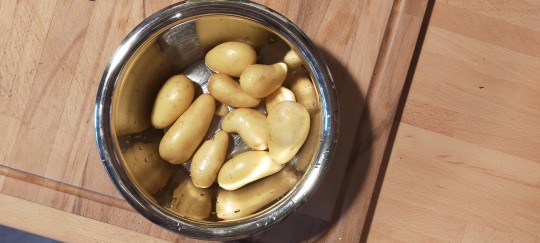
I am so happy with this harvest of small (some really tiny!) to medium Garden Potatoes, though. Their skin is thin, and once scrubbed, don’t they look pretty?And their flesh is beautiful and tasty!
#Growing#Growing Tip#Growing Tips#Garden Potatoes#Growing Potatoes#Potatoes#Potato Harvest#New Potatoes#Garden New Potatoes#Potato Bin#Garden#Kitchen Garden#Gardening#Gardening Tip#Gardening Tips#Growing and Gardening#Growing Gardening and Foraging#Growing Vegetables#Home-Grown Vegetables#Home-Grown Potatoes#Spuds
12 notes
·
View notes
Text
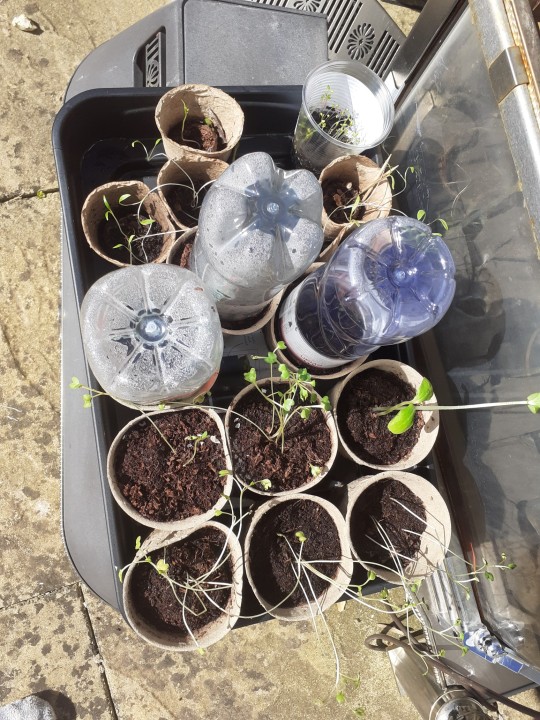
My seedlings, taking their first trip outside this year whilst it's finally sunny and warm.
Broccoli, parsnips, an apple seedling, and cucumbers.
Just need to not leave them out in the cold tonight.
16 notes
·
View notes
Text
How to grow vegetables in 6 simple steps?

Don't know where to start with your own vegetable garden? Check out our new infographic on How to grow vegetables in 6 simple steps! From selecting the right seeds to harvesting your bounty, our easy-to-follow guide will have you growing your own fresh produce in no time.
Visit www.yardener.com for more gardening resources.
Want more gardening resources? Check here
#Vegetable gardening#Gardening tips#Growing vegetables#Step-by-step gardening#Home gardening#Vegetable cultivation#Gardening for beginners#Organic gardening#Planting vegetables#Vegetable garden care#Gardening techniques#Growing your own food#Vegetable gardening guide#Sustainable gardening#Garden planning#Soil preparation#Free Gardening Information#Pest control in gardens#Yardener#Garden maintenance
3 notes
·
View notes
Text



Back home with the family in Greece and back to their lovely garden ☺️
#greek garden#garden#vegetable gardening#grapes#grape vine#olives#olive trees#growing fruit#growing vegetables#Greece
34 notes
·
View notes
Text
I'm growing a miniature Chinese eggplant and it's got some little eggplants now! This is my first time growing this and it was only a few inches tall when I planted it and now it's around two feet.


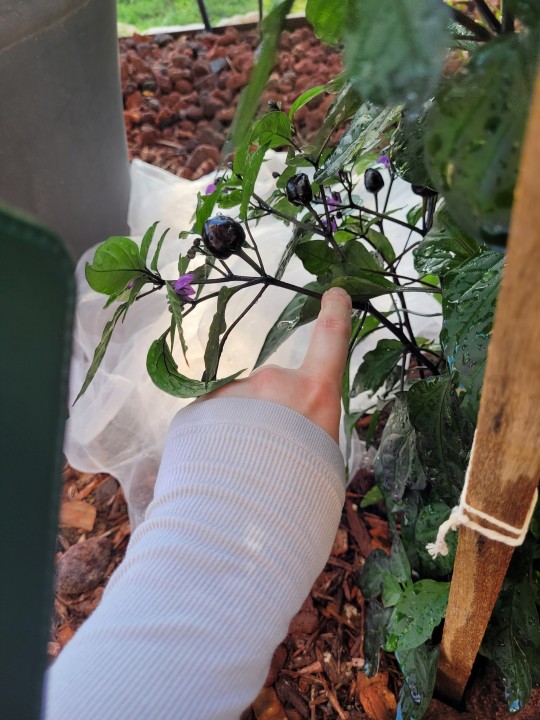
5 notes
·
View notes
Text
Highlights from the Summer Garden & a Big-Time Surprise Visitor
A visit from the deer we call Juna in June.
Before summer ends officially on September 23rd, I didn’t want the season to go by without a garden update on how the seedlings fared once they left the greenhouse in spring. Given the late date, this is sort of like a summer wrap-up post told mostly in images – a view of our New England garden from June to mid-September. Don’t miss the real garden…

View On WordPress
#end of summer#fall is coming#featured#flowers#Garden#garden animals#garden update#gardening#growing vegetables#grown from seed#plants#summer 2023#summer garden#sustainable living.#vegetable garden
1 note
·
View note
Text

this is the most bizarre courgette i have ever grown and he is absolutely massive
it had two flowers, it’s like two courgettes fully fused together i have never seen anything like it before
9 notes
·
View notes
Video
youtube
Dive into the world of sweet potato gardening with our magical trick to grow abundant slips effortlessly! 🌟 Watch as we unveil the secrets to transforming a simple sweet potato into a thriving garden of greenery. 🌿🌈✨ Perfect for both beginners and seasoned gardeners, this method is a game-changer for your home garden. 🌻🏡 Join us on this adventure and witness the magic of sprouting sweet potatoes right before your eyes! 🎥🌱
#youtube#video#my video#youtube views#youtube video#gardenblr#gardencore#potatoes#sweet potatoes#gardeningtips#vegetables#growing vegetables#howto#how to#tip#tips
4 notes
·
View notes
Text

I grow mangold mostly because it's so damn pretty, but now I'm learning to actually use it in cooking as well.
13 notes
·
View notes
Text
Gardening Tip: Nasturtium Water (Natural Fertiliser and Aphid Repellent)

I always think one law of physics that works well in the kitchen is Lavoisier’s Law --“Nothing is lost, nothing is created; everything is transformed”-- which I mostly apply to leftovers! It works even better in the Kitchen Garden!
Think about it: Coffee Grounds repel slugs, and an Elder Leaf Decoction chases unwelcome rodents, whilst Nettle Soup and Onion Skin Decoction will help make your soil fertile; like Egg shells which can be used both outside or while caring for your house plants.
So can Nasturtium Water. It is the water you have blanched your Nasturtium leaves in, when making a delicious Nasturtium Pesto. Don’t throw it away (“Nothing is lost”!) Allow it to cool and then pour it in your watering can and water your plants with it.
You can also pour Nasturtium Water in a spray bottle and spritz it onto ferns in the house or in the garden, and onto growing carrots and Parsnips in the Kitchen Garden! It acts both as a fertiliser, helping your plants grow lush and green, and an aphid and white flies repellent, keeping your growing vegetables healthy!
#Nasturtium Water#Gardening Tip#Gardening Tips#Gardening#Growing Tip#Growing Tips#Growing#Growing and Gardening#Natural Fertiliser#Natural Fertiliser recipe#Natural Aphid Repellent#Natural Aphid Repellent recipe#Fertiliser#Aphid Repellent#Growing Plants#Growing Vegetables#Kitchen Garden#House Plants#Plants#Plant Care
48 notes
·
View notes
Video
youtube
I’ve been researching and experimenting on polyculture gardening for a couple of seasons and I can see that it works very well! There are more pollinators and beneficial insects as well as birds in the garden now. It’s hard to see things change in one season, it takes time for living beings to adapt to your garden.
It’s a known fact that if you grow one kind of plant in neat rows, once pests will discover them there’s no chance that you’ll get rid of them (unless you use heavy chemical pesticides which are harmful for both humans and other living beings) .
But If you plant different kinds of companion plants together some of them will distract pests, some of them will attract predator insects and everyone will be happy!
We made a little video showing the different vegetables in one of our vegetable beds and I wrote down some explanation about each plant below. I hope you’ll find it helpful!
Avocado
Two avocado trees sprouted 2 years ago from vegetable scraps that I’ve buried in there and have been growing ever since. They endured frost, snow and heavy winds. There are two walls close to them which keeps them warm, and a very tall Himalayan Cedar tree on top of them that protects them from heavy rains and snow.
Mint
I planted mint to confuse pests with its smell and attract beneficial insects. It’s a wonderful hardy plant which has many culinary and medicinal uses. It just has to be kept in control, otherwise it will spread all over the bed. The best way to do it is to prune the spreading branches and air dry them for later culinary uses.
Tomatoes
Tomatoes are the stars of the summer vegetable garden! I love both growing and eating them!
I think of them as the main element of the garden bed and disperse the other plants around it.
Zucchini and Patty Pan Squash
I interplanted tomatoes with zucchini so they will shade the ground below, creating a living mulch. I used two varieties with the risk of being cross pollinated but so far so good!
Pumpkin
It makes a wonderful groundcover and provides amazing food for winter!
Fennel
Everyone says fennel stunts the growth of other vegetables around it, but I don’t think it’s true!
This one has been in the same spot for almost 3 years and tomatoes don’t seem to mind it!
Fennel is a perennial herb that I use fresh in salads, stir fries, pastas and so on! I also collect its seeds to use in herbal teas and savory cakes . The larvae of anise swallowtail butterfly feed on it and it’s an aphid trap!
Calendula
Ever since I first sowed calendula seeds in the garden they kept self seeding and flowering all year long! They are a good aphid trap , beneficial insect and pollinator attractor and they deter nematodes. In the beginning of spring they were about to take over the vegetable bed, so I pruned them heavily and lay them as mulch.They decomposed quickly, providing nutrients for the soil.
The flowers are medicinal, an infused oil made with them heals wounds, rashes and insect bites. I collect them all year long and dry them for later use.
Mallow
Mallow is a volunteer in the garden bed. It attracts pollinators such as bees, butterflies and hoverflies. It’s perennial and has beautiful flowers. Both flowers and leaves are highly medicinal, used in many different cultures for healing wounds, toothaches, joint pains and so on. It’s a hardy plant with edible leaves that are similar to spinach in taste.
Marigold
The most well known and used companion plant for tomatoes is marigold. It’s easy to grow and has beautiful flowers that attract beneficial insects such as hoverflies, ladybugs, lacewings and parasitic wasps. Where ever I planted a tomato, I planted a marigold.
Oh it’s also a dye plant that gives yellow color!
Sunchokes
On the outer edge of the bed I planted sunchokes. They grow tall and create a living fence. I had five kittens last year and I had to discourage them from using my veggie bed as toilet! So I went out and got a kilo of them from the farmer’s market and planted them in last year’s spring. They grew very tall and made the living fence that I imagined!
We harvested lots of them in October through December and left some in the ground for this year. They all sprouted towards the end of May. In fact too many of them sprouted, so I thinned them by moving them to the empty spots in the garden (you can read about it here ) .
Borage
I read about borage and its benefits so much that this year I decided to plant some! The seeds sprout easily in early spring but slugs love them and it’s a little hard to protect them . One day the seedlings are great with large leaves, next day they’re totally eaten! From the 5-6 seedlings only 3 remained and they’re flowering now!
It attracts pollinators, deters pests and adds trace minerals to the soil plus the leaves and flowers are edible! I’m hoping for it to self seed and remain in the garden forever!
Cucumber
As the sunchokes grow very tall, I planted cucumbers next to them so they can climb on it.
Beans
They provide nitrogen to the soil, so I planted climbing ones next to sunchokes and some bush types next to tomatoes.
Basil
Even though they are not seen on the video, I planted red and regular basil in the empty spots next to tomatoes. They deter pests with their smell and I heard that they make tomatoes taste better! I also like them a lot in salads and pasta sauces. Such a fresh taste!
Catnip (Nepeta cataria)
It’s a hardy perennial herb that attracts beneficial insects. Its tiny flowers attracts all kinds of bees.It self seeds and you can remove the seedlings to next to fruit trees or other empty spots in the garden.
We add it to our herbal tea blends all year long. It aids digestion, is mildly sedative and tastes great! As with cats…some love them and some ignore them. Only 2 out of 5 kittens in our garden liked it.
I’ll be posting new blog post at www.mandalinarossa.com
#permaculture#permakültür#permaculture gardening#sustainable living#organic gardening#Growing Vegetables#summer garden#growing#sürdürülebilir yaşam#polyculture#polyculture garden
12 notes
·
View notes